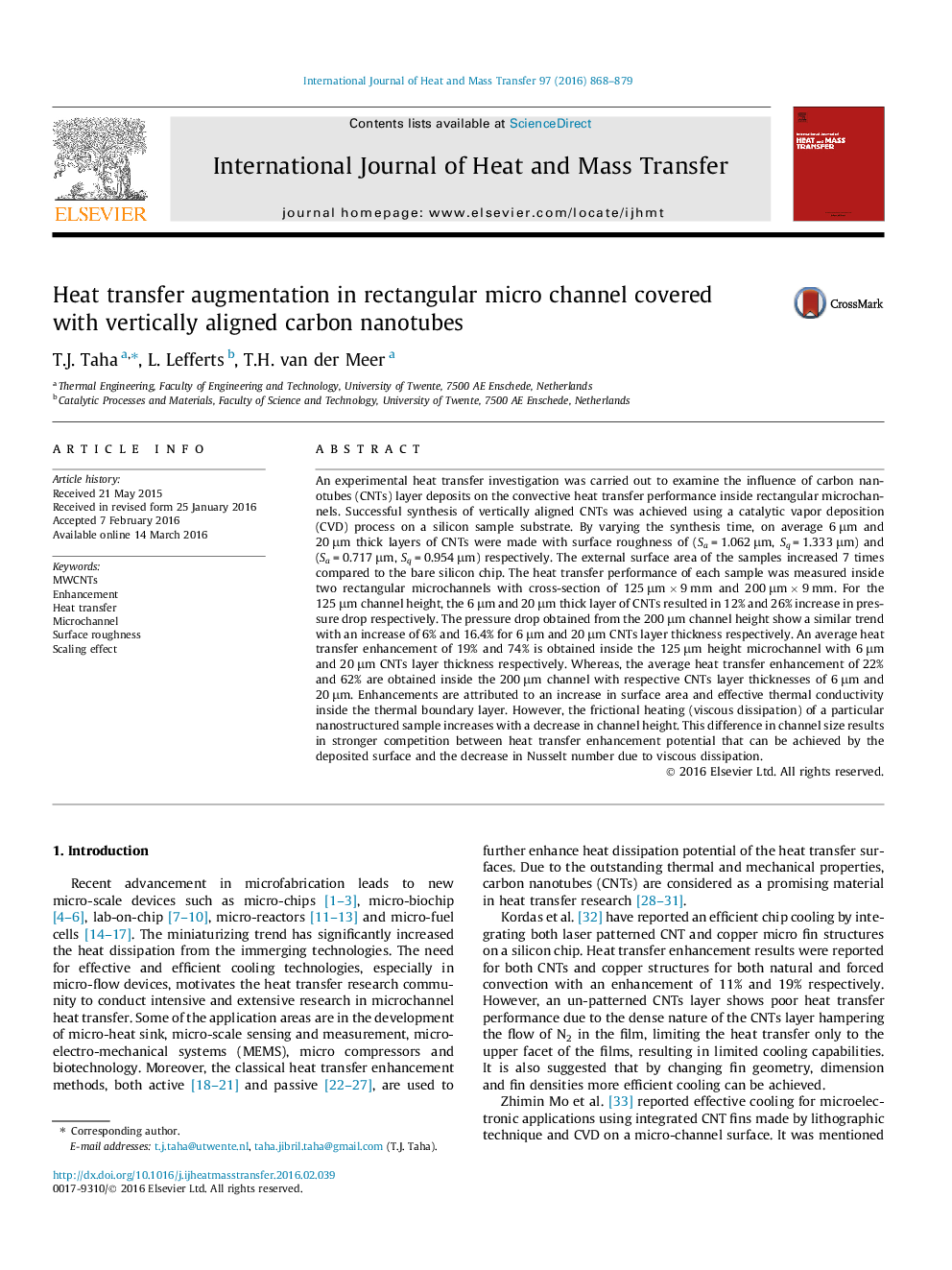| کد مقاله | کد نشریه | سال انتشار | مقاله انگلیسی | نسخه تمام متن |
|---|---|---|---|---|
| 7055807 | 1458045 | 2016 | 12 صفحه PDF | دانلود رایگان |
عنوان انگلیسی مقاله ISI
Heat transfer augmentation in rectangular micro channel covered with vertically aligned carbon nanotubes
ترجمه فارسی عنوان
تقویت انتقال حرارت در میکرو کانال مستطیلی پوشش داده شده با نانولوله های کربنی عمودی تراز
دانلود مقاله + سفارش ترجمه
دانلود مقاله ISI انگلیسی
رایگان برای ایرانیان
کلمات کلیدی
موضوعات مرتبط
مهندسی و علوم پایه
مهندسی شیمی
جریان سیال و فرایندهای انتقال
چکیده انگلیسی
An experimental heat transfer investigation was carried out to examine the influence of carbon nanotubes (CNTs) layer deposits on the convective heat transfer performance inside rectangular microchannels. Successful synthesis of vertically aligned CNTs was achieved using a catalytic vapor deposition (CVD) process on a silicon sample substrate. By varying the synthesis time, on average 6 μm and 20 μm thick layers of CNTs were made with surface roughness of (Sa = 1.062 μm, Sq = 1.333 μm) and (Sa = 0.717 μm, Sq = 0.954 μm) respectively. The external surface area of the samples increased 7 times compared to the bare silicon chip. The heat transfer performance of each sample was measured inside two rectangular microchannels with cross-section of 125 μm Ã 9 mm and 200 μm Ã 9 mm. For the 125 μm channel height, the 6 μm and 20 μm thick layer of CNTs resulted in 12% and 26% increase in pressure drop respectively. The pressure drop obtained from the 200 μm channel height show a similar trend with an increase of 6% and 16.4% for 6 μm and 20 μm CNTs layer thickness respectively. An average heat transfer enhancement of 19% and 74% is obtained inside the 125 μm height microchannel with 6 μm and 20 μm CNTs layer thickness respectively. Whereas, the average heat transfer enhancement of 22% and 62% are obtained inside the 200 μm channel with respective CNTs layer thicknesses of 6 μm and 20 μm. Enhancements are attributed to an increase in surface area and effective thermal conductivity inside the thermal boundary layer. However, the frictional heating (viscous dissipation) of a particular nanostructured sample increases with a decrease in channel height. This difference in channel size results in stronger competition between heat transfer enhancement potential that can be achieved by the deposited surface and the decrease in Nusselt number due to viscous dissipation.
ناشر
Database: Elsevier - ScienceDirect (ساینس دایرکت)
Journal: International Journal of Heat and Mass Transfer - Volume 97, June 2016, Pages 868-879
Journal: International Journal of Heat and Mass Transfer - Volume 97, June 2016, Pages 868-879
نویسندگان
T.J. Taha, L. Lefferts, T.H. van der Meer,
